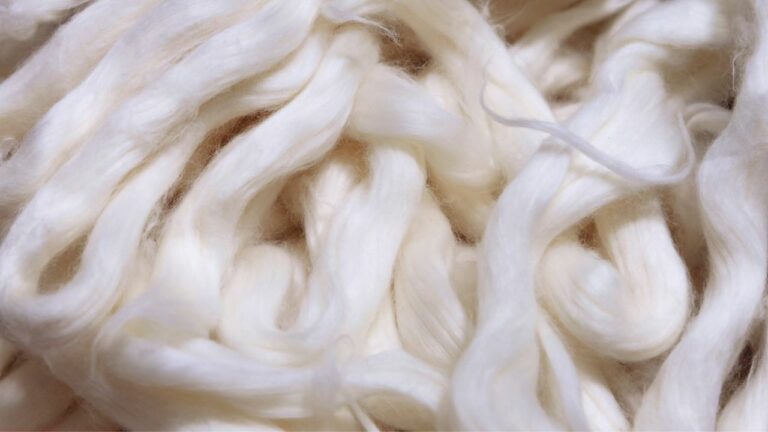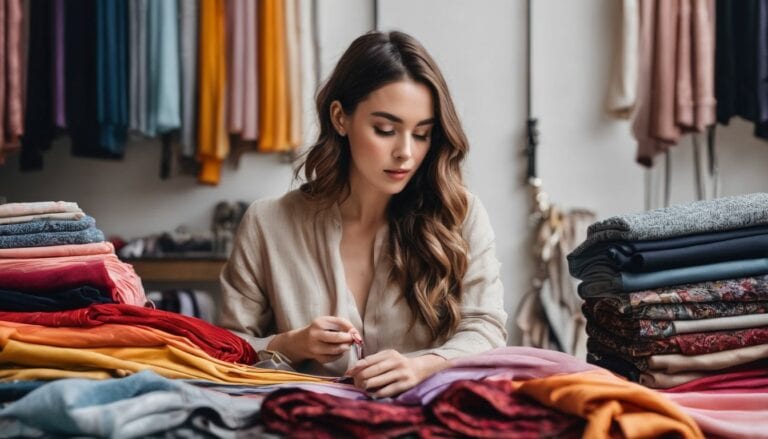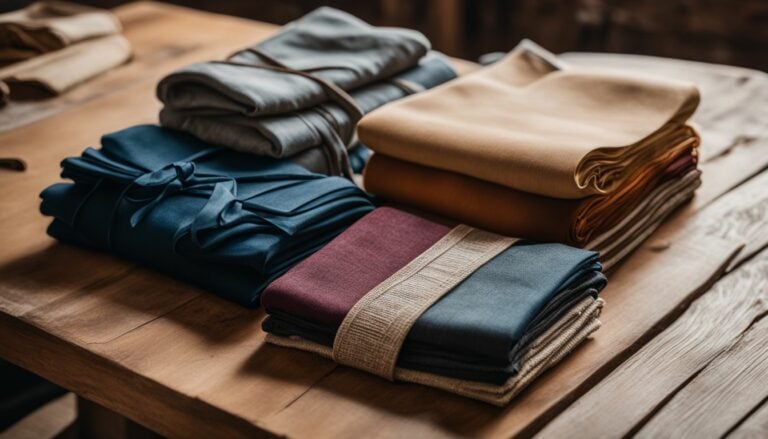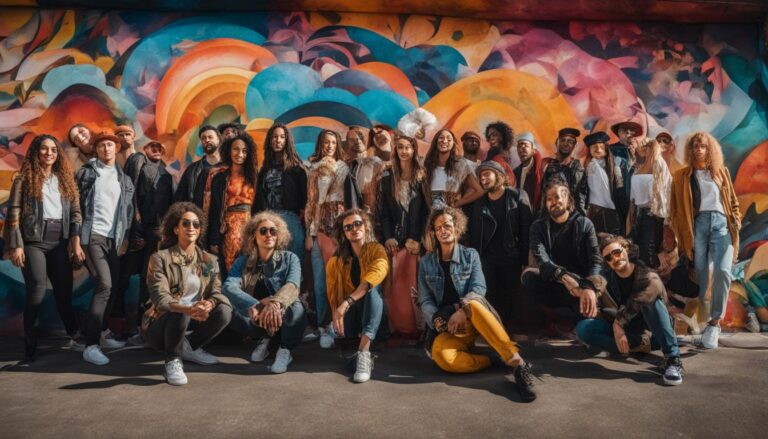Upcycle Fashion: Discover the Stunning World Of Turning Rags Into Treasure
Do you ever wonder what happens to your old clothes when they’re no longer in style or don’t fit? Approximately 85% of used textiles end up in landfills yearly, significantly contributing to environmental damage. Luckily, upcycle fashion provides solution this environmental degradation.
Upcycle fashion is revolutionizing the way we approach clothing. It goes beyond simply recycling or repurposing old garments.
Upcycling clothes involves transforming discarded materials into new, unique pieces of clothing with a fresh sense of style and purpose. Upcycled looks contribute to circular fashion and promote textile recycling.
With the rise of conscious consumerism, the popularity of upcycled clothing brands and upcycling clothing has grown as a sustainable alternative to traditional fast fashion. Many individuals are embracing upcycled clothing ideas and creating unique upcycled looks.
In this article, we will explore the essence of upcycle fashion and its role in the sustainable fashion movement. We will also discuss the potential that upcycled clothing brands hold for a greener future, specifically in the denim industry.
By offering a variety of styles, these brands cater to environmentally conscious consumers who are looking for sustainable options in their wardrobe choices.
Key Takeaways
- Upcycle fashion is a sustainable trend that transforms old clothes into new and stylish pieces, reducing textile waste and environmental damage.
- Choosing upcycled clothing helps mitigate the harmful effects of textile production by conserving natural resources, lowering pollution, and decreasing carbon emissions.
- Upcycle fashion also has economic implications by lowering production costs, supporting local economies, and providing unique designs that add value to products. It promotes ethical labor practices and raises awareness about conscious consumerism.
Definition and essence of upcycle fashion
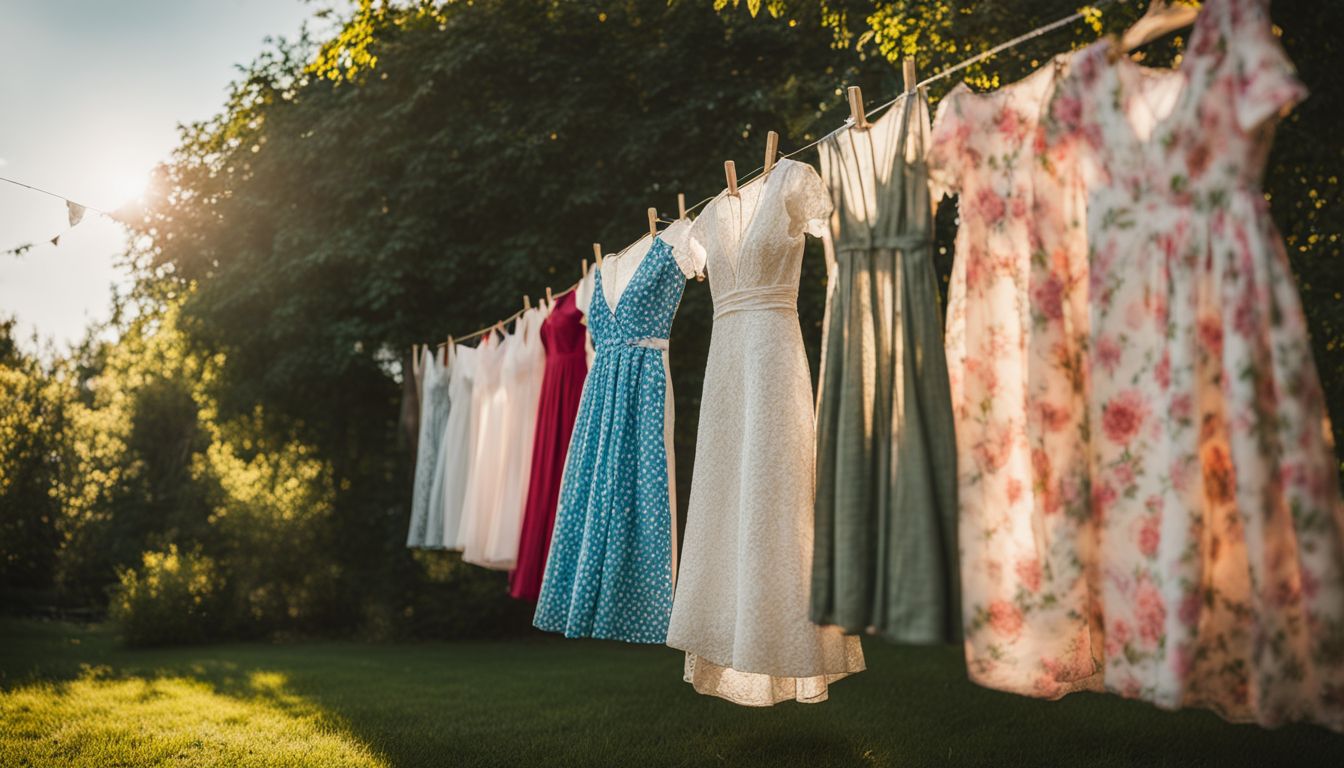
Upcycling is about turning waste or old products into better quality items, often with artistic or environmental value. It’s different from downcycling, which turns items into lower-quality materials. Unlike recycling, which breaks down materials, upcycling keeps the original materials but might change the item’s design.
It can make old clothes last longer and can change the fashion industry in a sustainable way. This process uses items that are no longer needed. These could be torn jeans, an out-of-date dress, or a stained shirt. By upcycling these items, we stop them from going to the dump.
We also make something beautiful and new to wear!
This way of making clothes is good for our planet! It leaves less trash in landfills – as stated before, it keeps old clothes from being tossed out. Upcycle fashion also needs less energy than creating new clothing.
Even more, upcycle fashion can show off your style and creativity! With some clever cuts and stitches here and there, an old t-shirt can become a trendy top or cool bag! So, let’s dive into the world of upcycle fashion – where waste becomes style!
Historical Context
In recent years, upcycling clothes, particularly denim, has gained popularity among consumers. Upcycled clothing brands have emerged in the fashion industry, catering to the growing demand for sustainable and unique fashion choices.
But did you know that the origins of upcycling, particularly in the fashion industry, can be traced back to both necessity and creativity? Upcycled clothing brands and potential fashion designers have found innovative ways to repurpose denim and create unique pieces.
Let’s explore the potential of upcycling denim and how it has evolved over time in the clothing brand industry. We’ll discuss its impact on price and the growth of sustainable fashion.
Origins of Upcycling: From Necessity to Trend

Upcycling has the potential to make the most out of limited resources, and it is not a new concept. People have been practicing upcycling for centuries to check the price and make the most out of limited resources. It is a great way to enhance the brand.
In the past, when the price of new clothing was high or unaffordable, people would check, mend, alter, or repurpose their existing garments to extend their lifespan and maximize their potential. This practice not only helped save money but also allowed individuals to maintain their brand and style. This practice was born out of necessity rather than fashion trends. It is important to check the price and potential of a brand.
The rise of conscious consumerism and its link to upcycle fashion

Over time, the potential of creating unique styles with limited resources became a creative outlet for individuals seeking to check the price and brand. This shift towards contemporary upcycling has allowed people to express their individuality and creativity while also being mindful of the environment.
Since upcycling involves taking old or discarded items and transforming them into something new and valuable. it is a way to give new life to items that would otherwise end up in landfills. With the rise of social media and online platforms, upcycling has gained popularity and has become a trend in the world of fashion and home decor.
People are now able to share their upcycling projects and inspire others to think outside the box and repurpose items in innovative ways. From turning old jeans into trendy tote bags to repurposing vintage furniture into stylish pieces, contemporary upcycling offers endless possibilities for creating unique and sustainable designs.
It not only allows individuals to save money and reduce waste but also encourages a more conscious and mindful approach to consumption. By embracing upcycling, we can transform our homes and wardrobes while also making a positive impact on the planet.
The Multifaceted Benefits of Upcycle Fashion
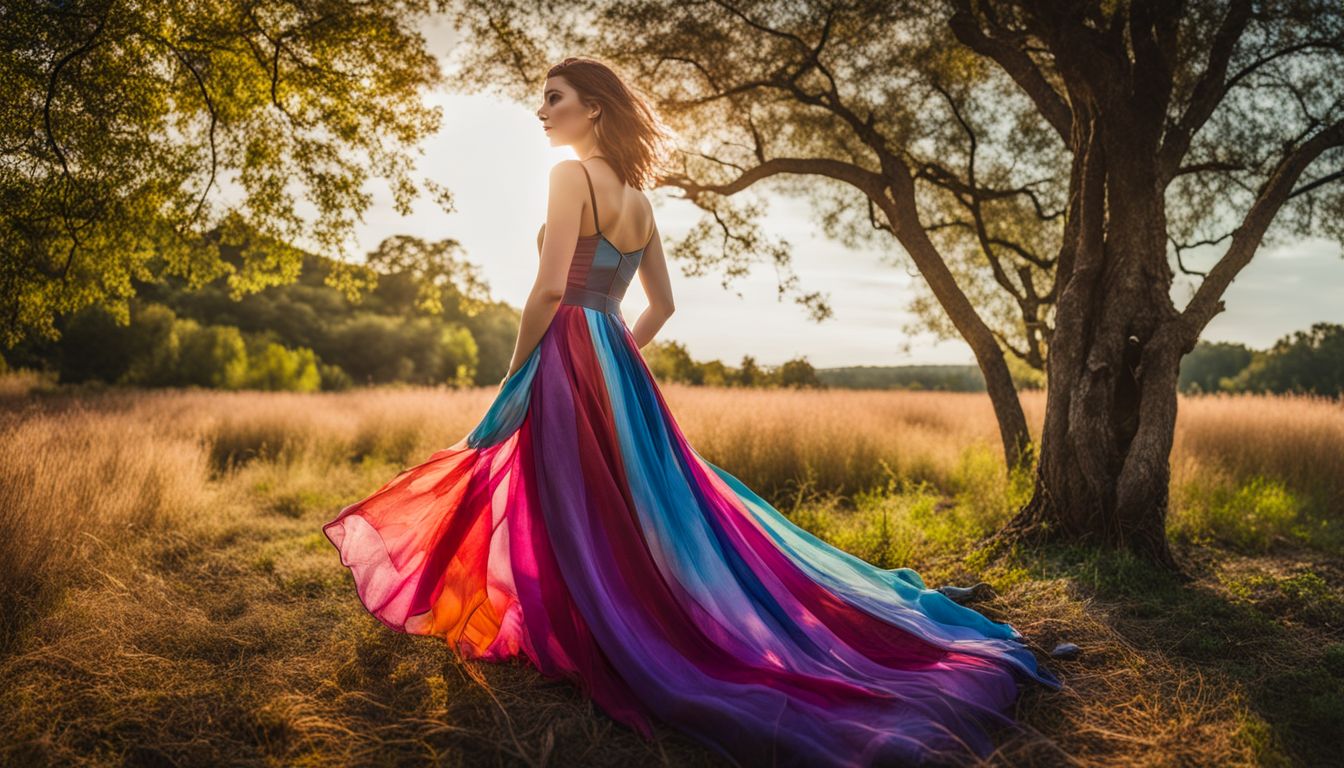
Upcycle fashion brings a variety of benefits that go beyond just being eco-friendly. One major advantage is its positive impact on the environment. By repurposing materials that would otherwise end up in landfills, upcycling reduces textile waste and helps conserve natural resources.
It also reduces pollution and carbon emissions by decreasing the need for new production processes.
In addition to its environmental benefits, upcycle fashion also has economic implications. Because it prolongs the lifecycle of materials, it can lower production costs in the fashion industry. Because the production costs are low, prices will also be low, allowing shoppers to save or have more money left to buy more.
Upcycled products often have unique designs and craftsmanship, which adds value and allows for premium pricing. This can boost local economies and support artisans who specialize in creating upcycled pieces.
Moreover, upcycle fashion holds social and cultural significance. Preserving cultural heritage through textiles helps sustain traditional craftsmanship techniques and supports communities that rely on these skills.
It also promotes ethical labor practices by discouraging exploitative working conditions commonly associated with fast fashion brands. Through awareness-raising efforts, upcycle fashion encourages consumers to make sustainable choices and become more conscious about their clothing purchases.
Overall, upcycle fashion offers a multifaceted benefits and approach toward sustainability while fostering creativity and providing stylish options for conscientious consumers. Let’s
Environmental Impact Of Upcycled Fashion
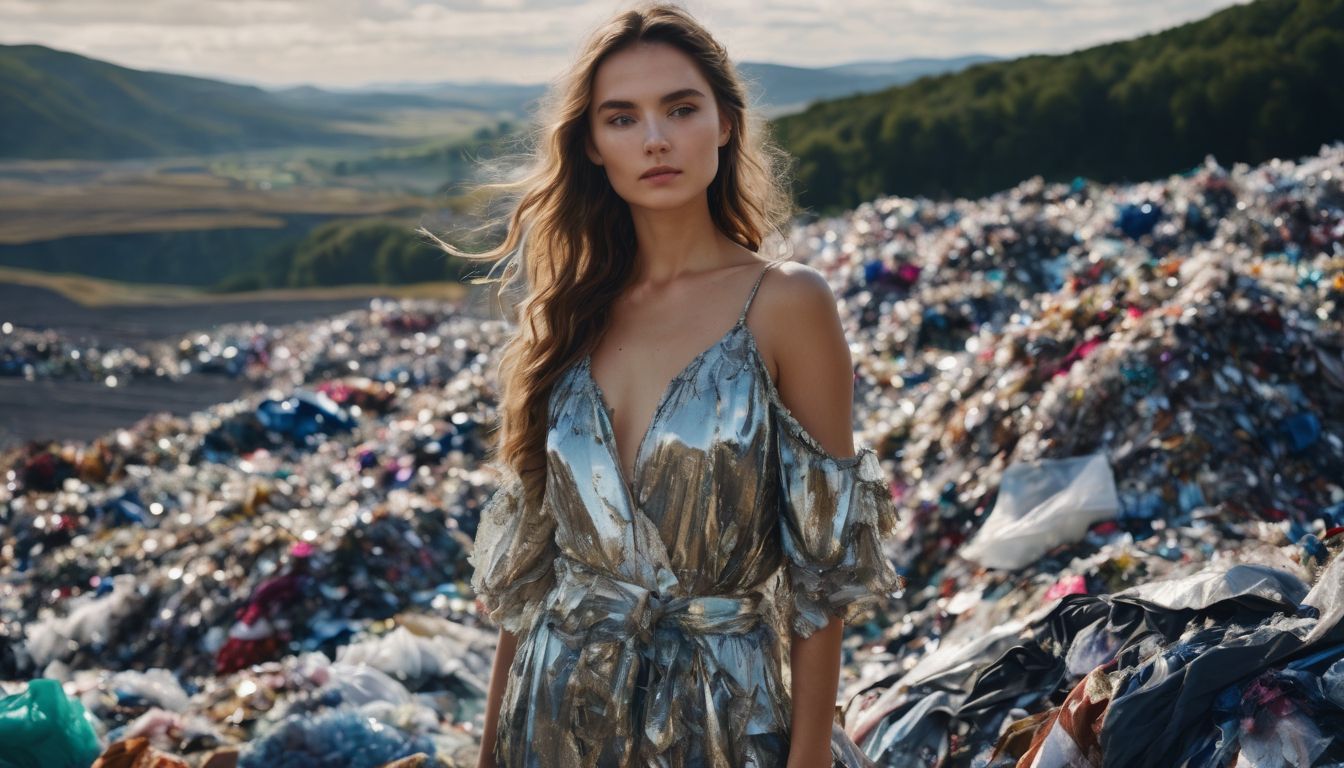
Upcycle fashion has a significant positive impact on the environment. It reduces the amount of textile waste in landfills by repurposing materials that would have otherwise been thrown away.
This helps to mitigate the harmful effects of textile production and disposal on the planet. According to Planet Aid, for every pound of clothing saved from disposal through upcycling, approximately 3-4 pounds of CO2 emissions are avoided.
Upcycled clothes are made from unwanted materials like old clothes and textiles, meaning less energy and resources are needed than creating new garments from scratch. Overall, upcycle fashion is a sustainable practice that plays an important role in reducing the use of natural resources and minimizing pollution in the fashion industry.
Moreover, participating in upcycling can also lower production costs in the fashion industry by making something valuable out of used textiles and old clothes instead of starting from raw materials.
This economic benefit encourages brands and designers to incorporate upcycling into their business models, reducing waste generation.
By choosing upcycle fashion over fast fashion, consumers can make a positive impact on both environmental conservation and human welfare as well. Taking steps towards conscious consumerism by supporting ethical brands that prioritize sustainability helps promote a shift towards more responsible practices throughout the fashion supply chain.
This includes preserving cultural heritage through textiles while promoting ethical labor practices and raising awareness about sustainable choices among individuals worldwide.
Mitigating textile waste
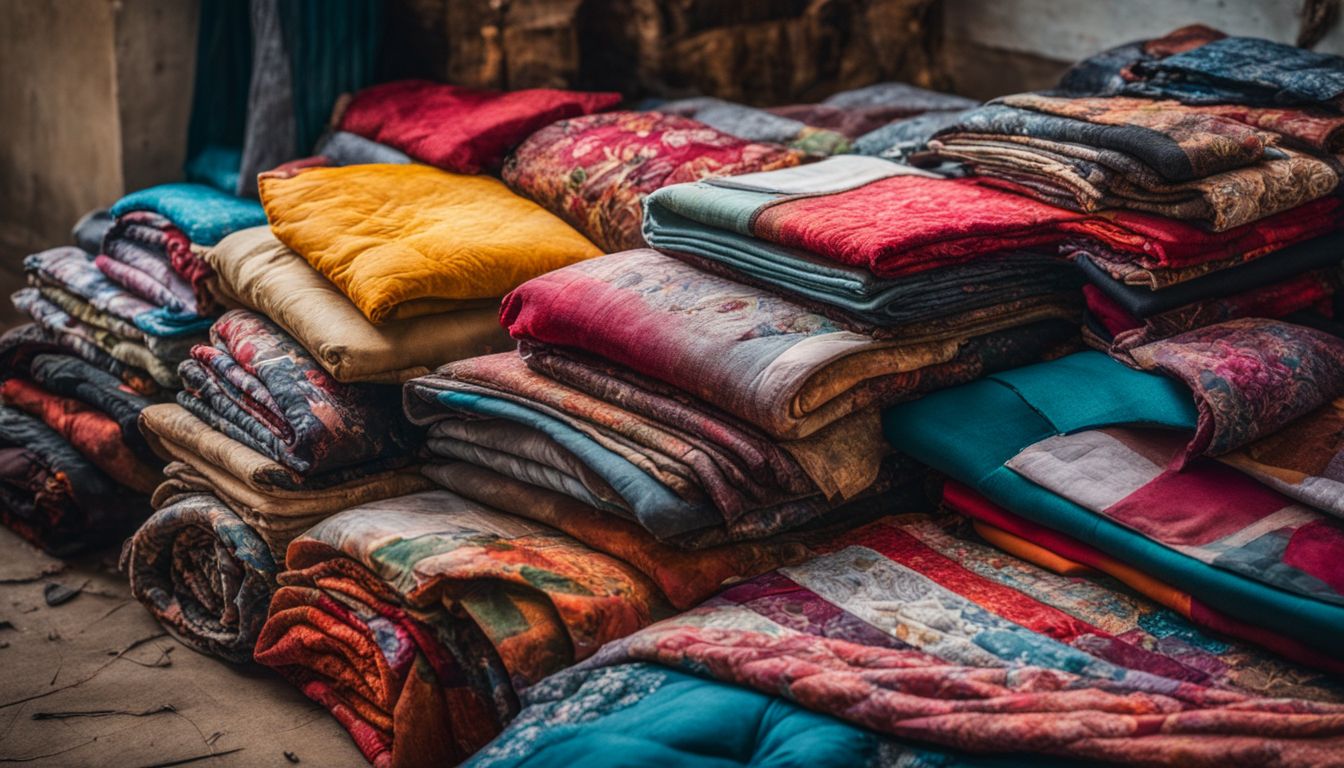
Upcycling fashion plays a crucial role in mitigating textile waste. Out of all the fibers used in apparel, 87% end up being burned or sent to landfills. Under 1% of worn clothing is repurposed into new clothing items. Instead of throwing away old clothes and materials, upcycling gives them new life and purpose.
By repurposing these items, we can reduce the amount of textile waste ending up in landfills. This helps conserve natural resources, save energy, and minimize pollution caused by producing new textiles. Approximately 3-4 pounds of CO2 are preserved for every 1 pound of clothing that is spared from disposal, saving 300-400 million pounds of CO2 from going into the atmosphere.
Upcycled clothes are made from unwanted materials that would otherwise go to waste, helping to create a more sustainable fashion industry. Participating in upcycling reduces environmental impact and allows us to showcase our creativity and embrace eco-friendly options.
Reducing water and energy consumption
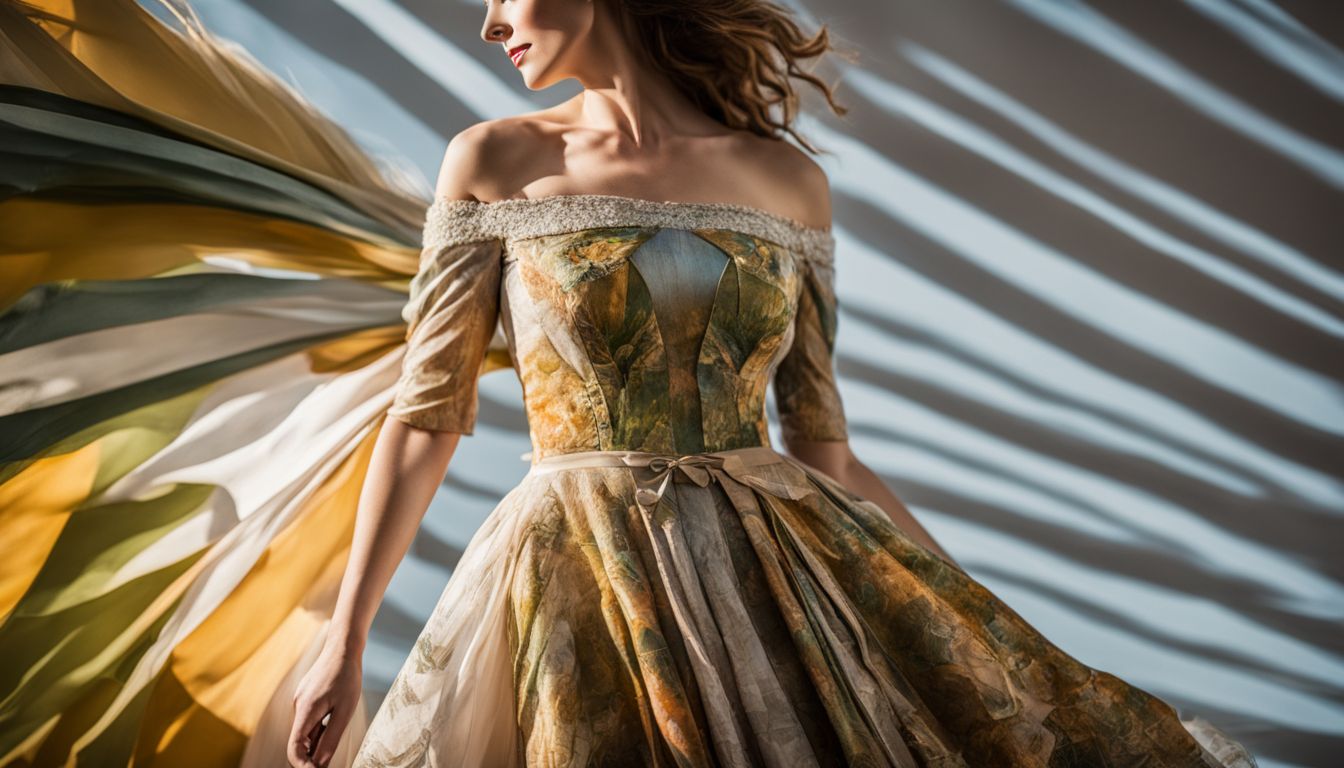
Upcycle fashion plays a significant role in reducing water and energy consumption. Annually, the fashion sector consumes 93 billion cubic meters of water, sufficient to satisfy the demands of 5 million individuals.
According to World bank, textile dyeing and treatment account for 17-20% of industrial water contamination. Fabric production also demands vast amounts of freshwater, with a single T-shirt using up around 700 gallons.
By collecting approximately 90 million pounds of clothing each year, 130 billion gallons of fresh water is conserved. To give a comparison, Americans consume 8.4 billion gallons of bottled water annually.
The cotton and water used for fashion production all come from our ecosystem. 40% of apparel are made with cotton. Making a single t-shirt consume 2,700 liters of water. Recycling textiles can reduce the extraction of these natural resources.
Manufacturing textiles from scratch consumes vast amounts of water and energy, contributing to pollution and carbon emissions. However, by using pre-existing materials, upcycle fashion minimizes the need for these resources.
Additionally, when consumers choose upcycled clothing over newly manufactured items, they decrease overall demand for production processes that consume large quantities of water and energy.
This shift towards sustainable alternatives helps protect our environment while allowing us to enjoy stylish and unique clothing options. By repurposing materials that would otherwise be thrown away, upcycled clothing requires less water and energy compared to producing new garments.
Decreasing pollution and carbon emissions

Reducing pollution and carbon emissions is essential for creating a more sustainable world. The textile industry is one of the most polluting industries globally. Textile factories are responsible for a significant 20% of global industrial water contamination and utilize around 20,000 different chemicals in clothing production, many of which are potentially cancer-causing.
In China, these mills emit approximately 3 billion tons of soot annually by relying on coal as an energy source, contributing to respiratory and cardiac conditions. Most of these textile production facilities are situated in emerging nations where the industry’s rapid growth outpaces the government’s ability to manage its vast environmental impact.
The fashion sector also contributes to 10% of the world’s yearly carbon footprint, surpassing the combined emissions from global air travel and sea freight. If it continues at its current rate, its greenhouse gas output will increase by over 50% by 2030.
Given the existing demographic and consumption trends, clothing consumption is projected to grow from 62 million metric tons in 2019 to 102 million tons in a decade. Annually, the equivalent of 50 billion plastic bottles, or half a million tons of plastic microfibers, end up in our oceans. These microfibers pose a threat as they are non-removable from water and can infiltrate the entire food ecosystem.
The environmental impact of clothing varies based on its material. Synthetic materials like polyester may be more water and land-efficient than natural fibers like cotton. Still, they produce more greenhouse gases per weight.
For instance, a polyester shirt has a higher carbon impact than its cotton counterpart, which are 5.5 kg compared to 4.3 kg. In 2015, polyester textile production emitted around 706 billion kg of greenhouse gases, akin to the yearly emissions of 185 coal-powered plants.
Upcycle fashion plays a crucial role in decreasing pollution and carbon emissions. When we upcycle we clothes, we reduce the need for new materials to be produced, which means less pollution from factories and fewer greenhouse gas emissions.
By embracing upcycle fashion, we can also decrease pollution caused by the production process. By repurposing old textiles and clothes, we prevent them from ending up in landfills where they would release harmful chemicals into the environment. In fact, recycling clothes weighing 100 million pounds is equivalent to taking 26,000-35,000 vehicles off the streets.
The U.S. EPA states that, on average, a passenger vehicle releases around 11,000 pounds (or 4.75 metric tons) of CO2 annually. This action helps in decreasing greenhouse gas emissions and mitigating the fashion industry’s impact on climate change. Reducing carbon emissions helps combat climate change and creates a cleaner and healthier planet.
When we wear upcycled clothing instead of buying new garments made with virgin materials, we lessen our contribution to this pollution. Upcycling reduces the demand for new textiles and decreases the amount of waste generated during production.
Moreover, by supporting upcycle fashion brands and artisans who create these unique pieces of clothing using discarded materials or vintage fabrics, we promote sustainable choices that positively impact local economies and the environment.
By valuing these products made with care and creativity over mass-produced fast fashion items created under exploitative conditions, we are promoting ethics in the industry, while reducing our carbon footprint and encouraging sustainable shopping habits for ourselves and future generations. With upcycle fashion, we can create a stylish and eco-friendly future.
Economic Implications
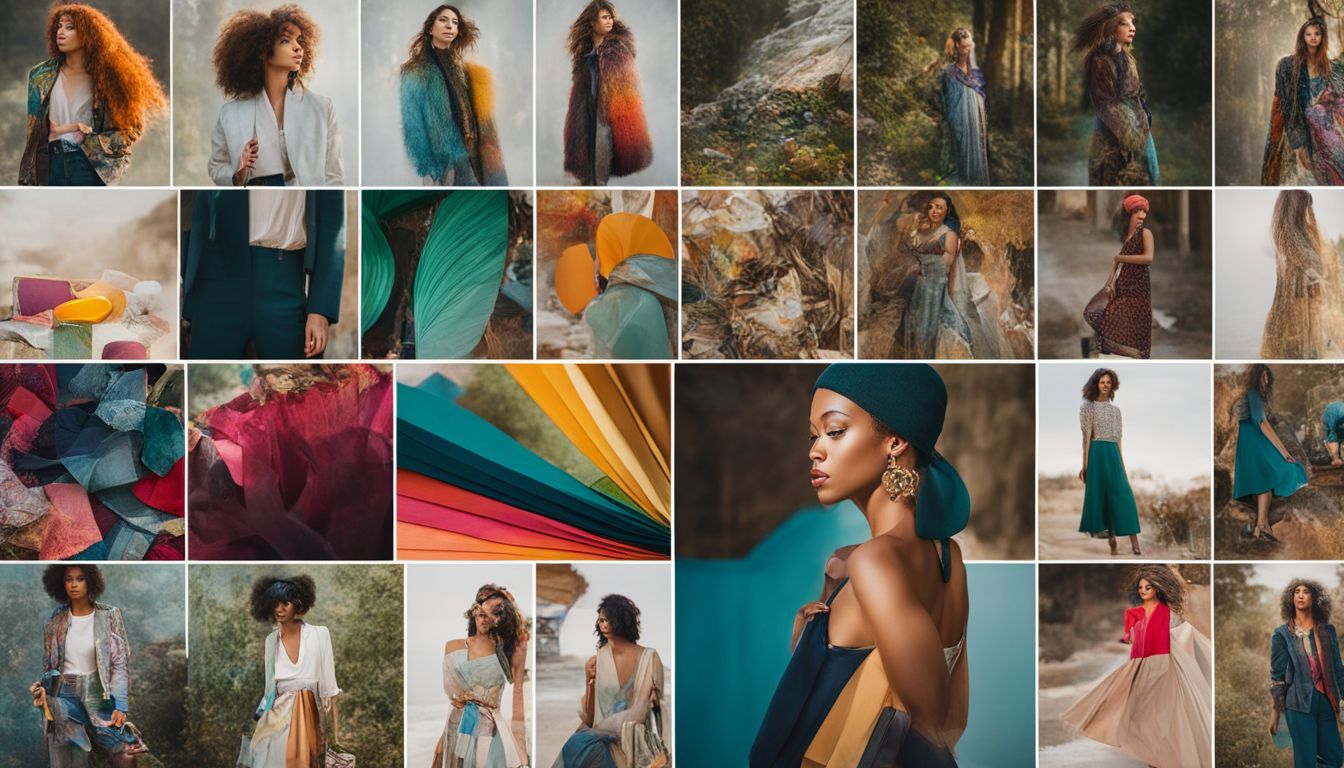
Upcycle fashion has important economic implications that benefit both local economies and artisans. By prolonging the lifecycle of materials, upcycling reduces the need for new production, which can lower costs in the fashion industry.
Additionally, upcycled products often command a premium price due to their unique and sustainable nature. This allows artisans and designers to earn a fair income from their creations.
Moreover, supporting upcycle fashion brands and initiatives creates job opportunities within communities while promoting positive economic growth. By choosing upcycled products, consumers can contribute to a more sustainable economy that supports local businesses and fosters creativity.
Prolonging the lifecycle of materials
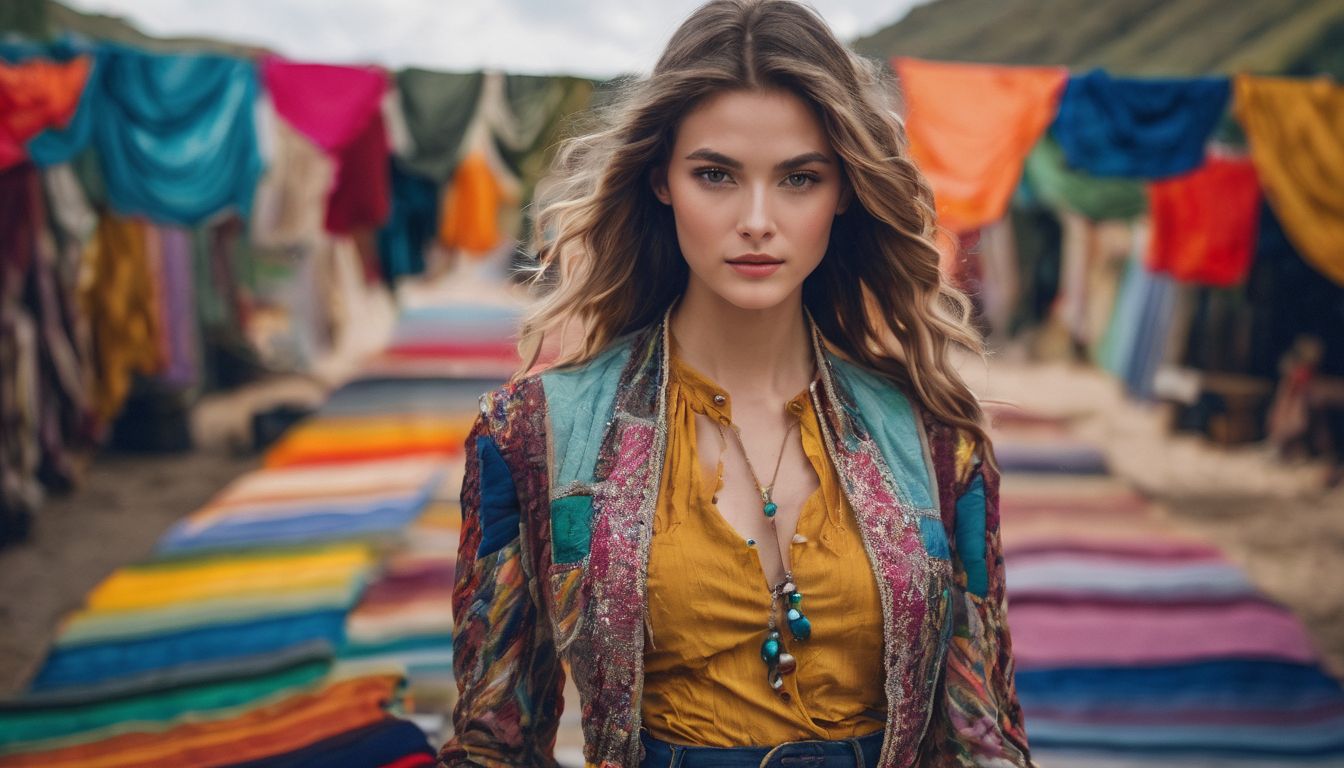
Upcycle fashion plays a crucial role in prolonging the lifecycle of materials. Instead of throwing away used textiles and old clothes, these items are repurposed and transformed into new, stylish creations.
By giving these materials a second life, we reduce waste that would otherwise end up in landfills. This helps to conserve natural resources and lowers the carbon emissions associated with textile production.
Upcycling also promotes creativity and offers eco-friendly options for consumers who want to make sustainable fashion choices. Making sustainable fashion choices is a win-win situation where we can look and do good for the environment!
Boosting local economies and artisans
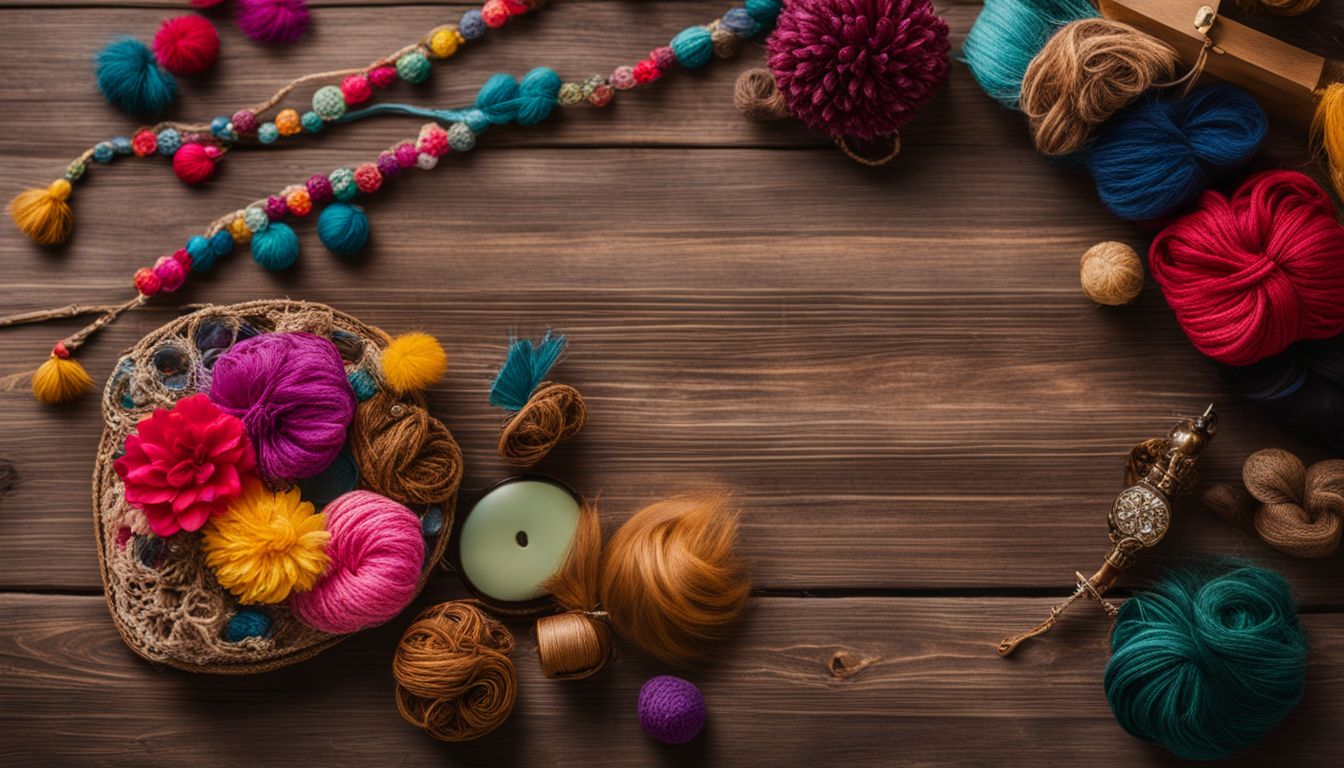
Upcycle fashion has the power to boost local economies and support artisans in communities around the world. Upcycled fashion creates new opportunities for small businesses and independent designers by repurposing materials that would otherwise go to waste.
When people choose to buy upcycled clothing, they are not only making a sustainable choice but also directly supporting local artisans and craftsmen.
By giving new life to discarded textiles, upcycling helps prolong the lifecycle of materials and reduces the need for new production. This means that less money is spent on sourcing raw materials, which can be costly and harmful to the environment.
Instead, upcycled fashion relies on resources that already exist, allowing communities to make use of what they have rather than relying on external sources.
Moreover, upcycle fashion enables artisans to showcase their creativity and skills by transforming old clothes into unique and stylish pieces. This adds value to their work and attracts customers who appreciate one-of-a-kind items.
By investing in these products, consumers contribute directly to the livelihoods of local artisans while also promoting sustainable practices within the fashion industry.
Choosing upcycle fashion supports local economies by providing income opportunities for artisans and small businesses. It encourages creativity, sustainability, and ethical labor practices within the industry as well.
By purchasing upcycled clothing, individuals can make a positive impact on both a global scale—by reducing textile waste—and at a grassroots level by boosting local economies.
Value addition and premium pricing of upcycled products
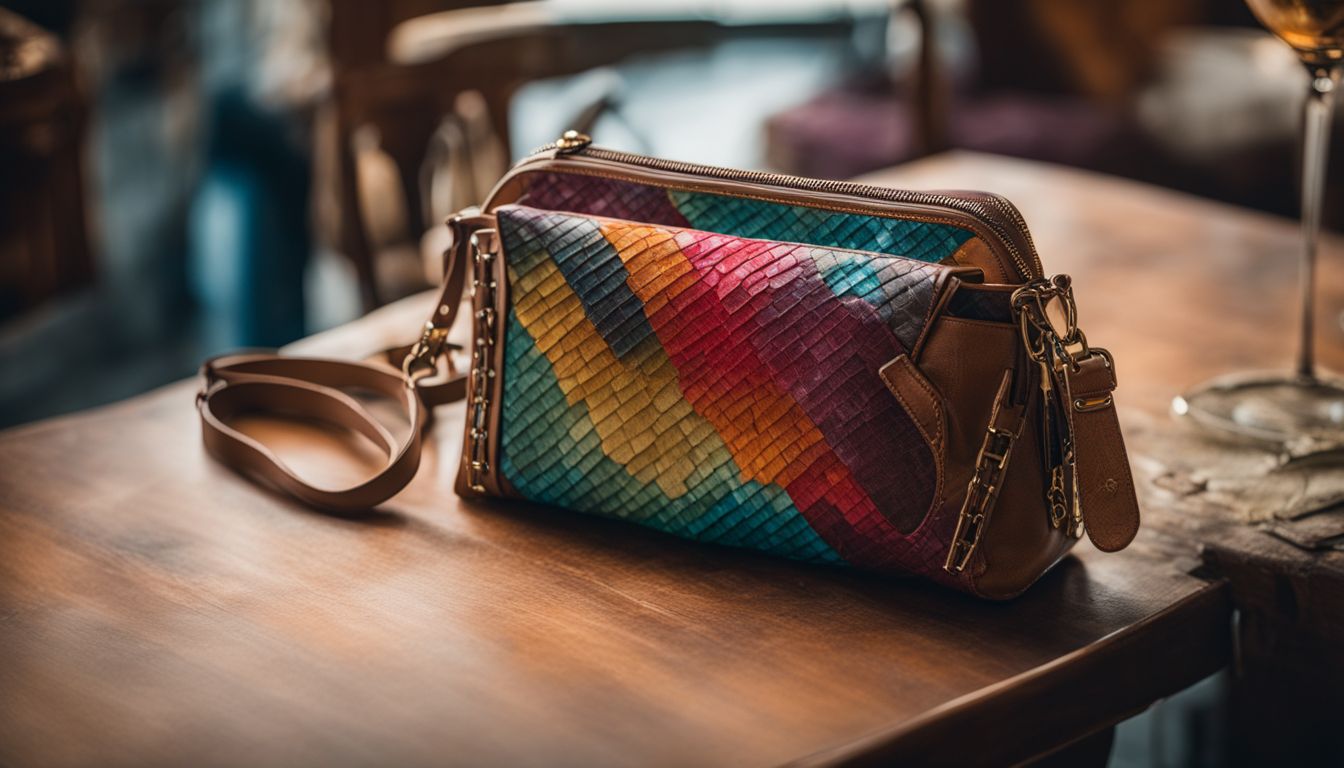
Upcycled products have seen a rise in value and premium pricing due to their unique qualities and sustainable nature. When materials are repurposed and transformed into new products, they acquire added value because of the creativity and craftsmanship involved.
Upcycled fashion items offer something different from mass-produced goods, making them desirable to consumers who prioritize individuality and eco-consciousness. By giving new life to old materials, upcycled products also contribute to reducing textile waste, which is a pressing environmental issue.
Additionally, upcycling can help local economies by supporting artisans and small businesses that specialize in creating these one-of-a-kind pieces. Overall, the premium price of upcycled products reflects their positive impact on the environment as well as the creativity and innovation behind them.
Social and Cultural Significance

Upcycle fashion holds great social and cultural significance. Firstly, it helps preserve cultural heritage through textiles. By repurposing traditional fabrics or incorporating vintage designs, upcycle fashion celebrates diverse cultures and their rich history.This allows us to appreciate the craftsmanship and artistry of different communities.
Secondly, upcycle fashion promotes ethical labor practices. Many upcycle brands prioritize fair trade and ensure that their garments are made in safe working conditions with fair wages.By supporting these brands, consumers can contribute to a more equitable and sustainable fashion industry.
Lastly, upcycle fashion raises awareness about sustainable choices. It encourages individuals to think about the environmental impact of their clothing purchases and make conscious decisions.Through this movement, people are becoming more mindful of the value of reusing materials and reducing waste.
In summary, upcycle fashion not only offers stylish alternatives but also plays a crucial role in preserving culture, promoting ethics in production, and educating individuals about sustainability in the world of fashion.
Preserving cultural heritage through textiles
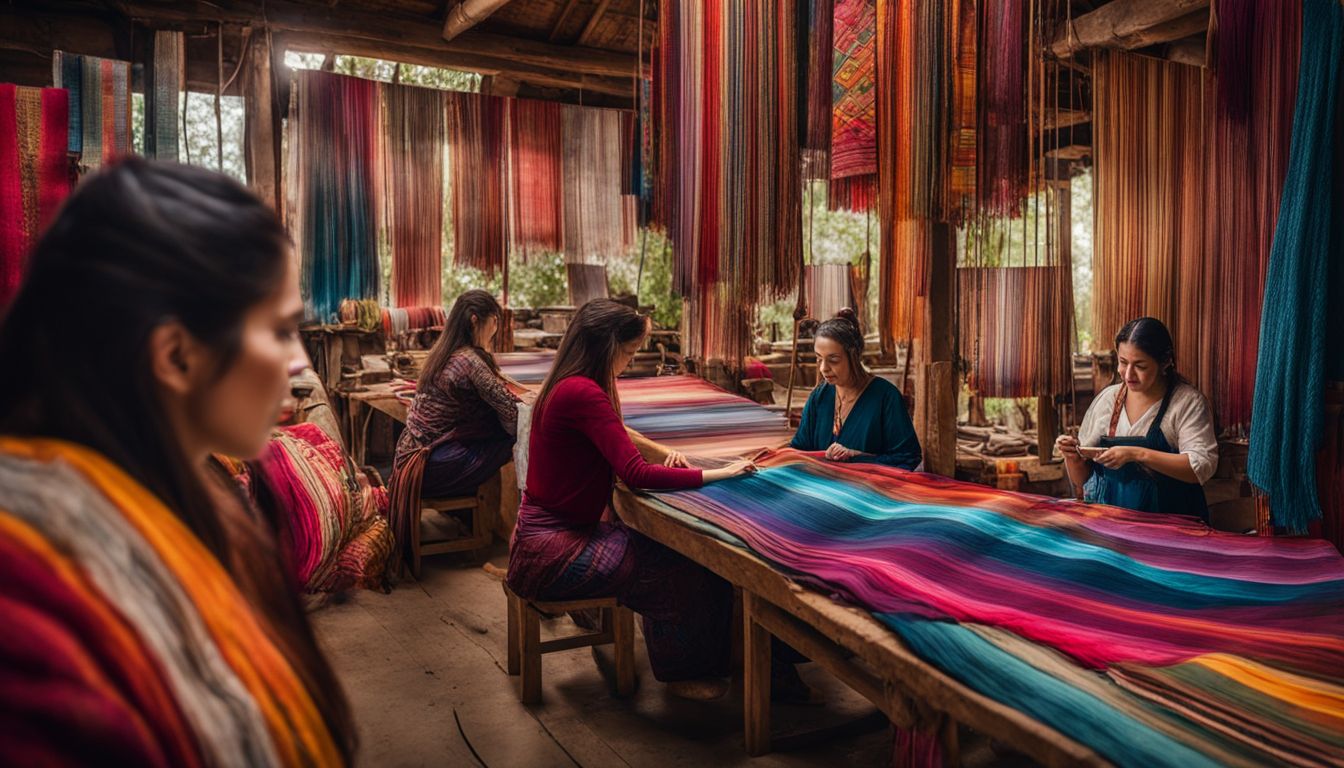
Preserving cultural heritage through textiles is an important aspect of upcycle fashion. The use of traditional fabrics and weaving techniques can help keep ancient traditions alive.
By repurposing vintage garments or incorporating traditional patterns into modern designs, upcycled fashion allows for the celebration and preservation of diverse cultures around the world.
Through upcycling, old textiles can be given new life, ensuring that the stories and craftsmanship embedded in them are not lost. Additionally, by supporting local artisans who create these textiles, upcycle fashion helps sustain traditional livelihoods and promotes ethical labor practices.
In a world where fast fashion often dominates, embracing upcycle fashion allows us to make sustainable choices that honor our shared heritage while reducing waste. By valuing these cultural treasures and incorporating them into contemporary styles, we can create a future where sustainability coexists with beauty and tradition.
Promoting ethical labor practices
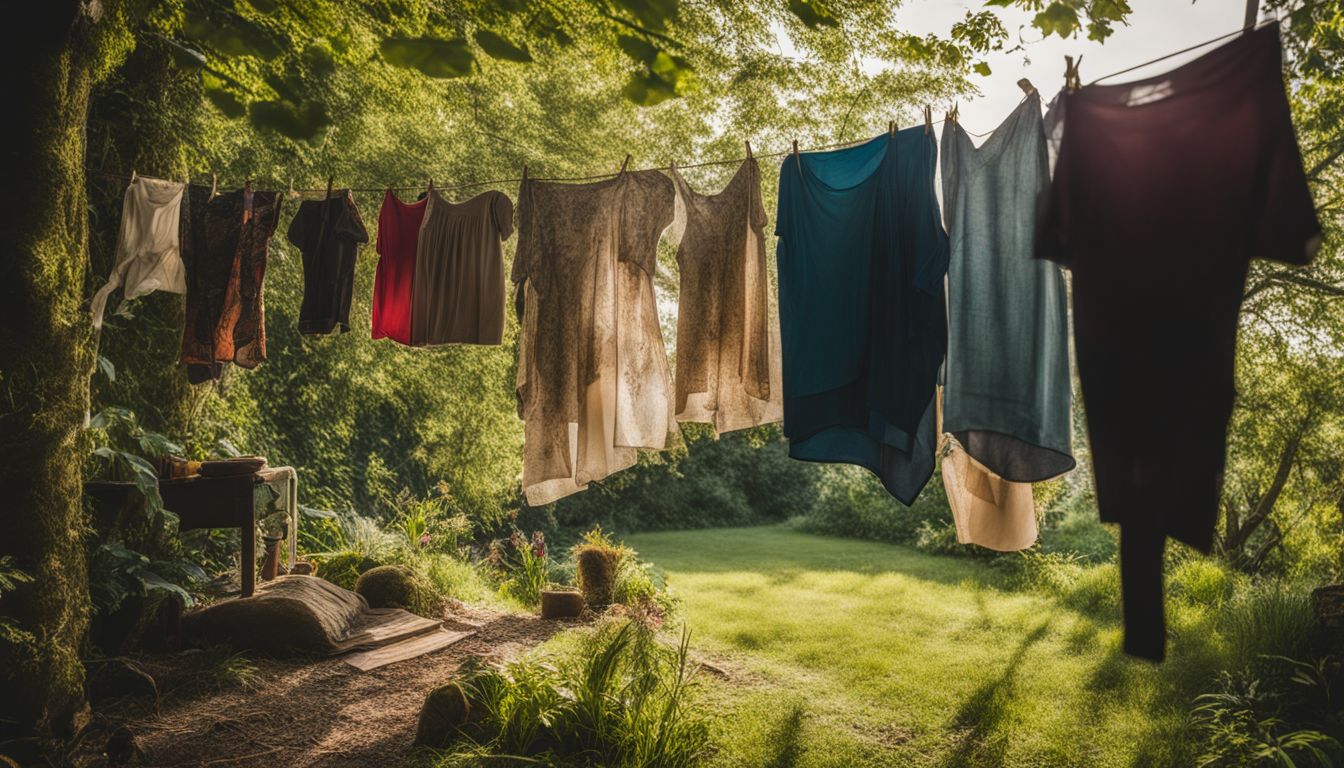
Promoting ethical labor practices is a crucial aspect of upcycle fashion. It involves ensuring that the workers involved in creating upcycled clothing are treated fairly and paid a fair wage.
By promoting ethical labor practices, we can ensure that the people behind our clothes have safe working conditions and are not exploited. This means supporting brands and initiatives that prioritize transparency, fair trade, and worker empowerment.
Ethical labor practices also extend to upcycling materials sourced from secondhand or vintage garments by giving them new life instead of relying solely on new production, which helps reduce the environmental impact of the fashion industry while also preserving cultural heritage.
Raising awareness about sustainable choices
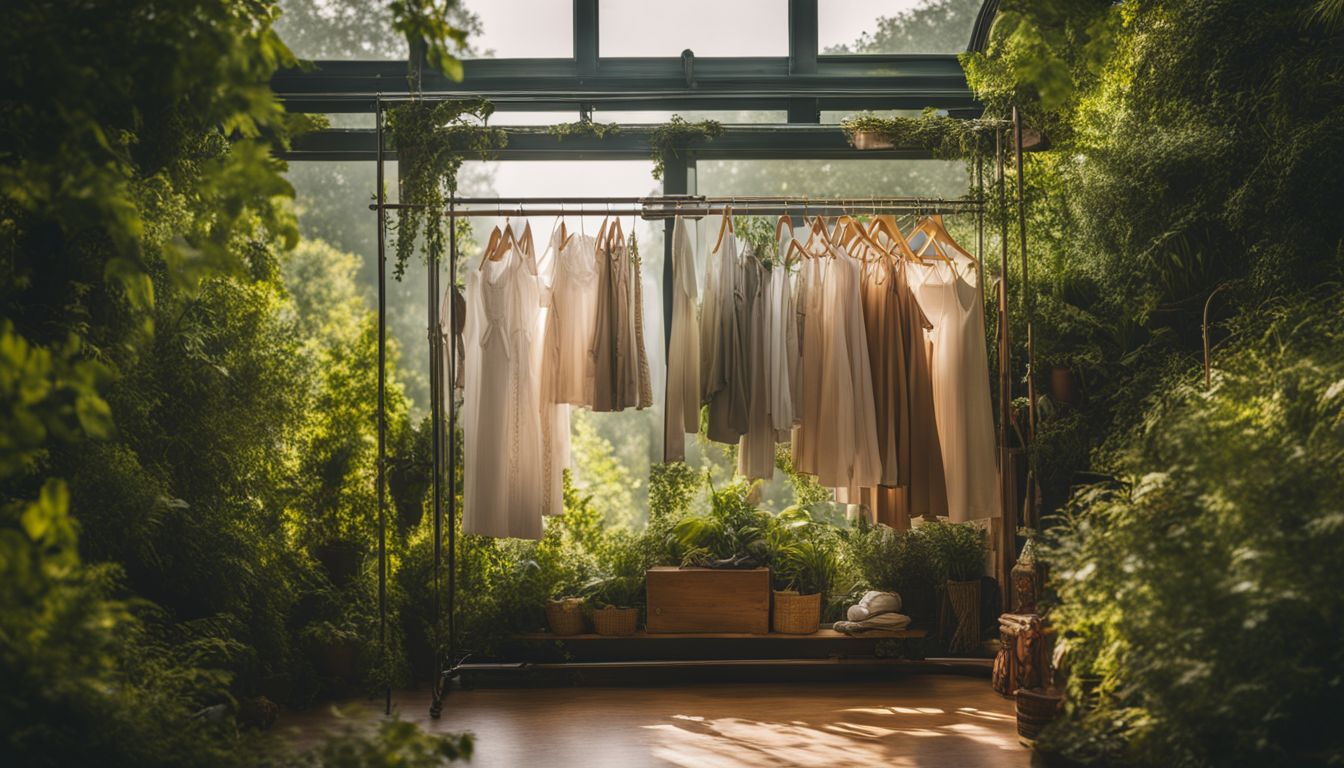
One key aspect of upcycle fashion is raising awareness about sustainable choices. It’s important to educate people about the environmental impact of the fashion industry and how their choices can make a difference.
By promoting upcycled clothing, we can encourage consumers to opt for eco-friendly and ethical alternatives. Through educational initiatives, social media campaigns, and community events, we can empower individuals to make informed decisions that align with their values.
By spreading the word about the benefits of upcycle fashion – such as reducing textile waste and conserving resources – we can inspire others to embrace sustainable choices in their own lives.
Together, we can create a more conscious and responsible fashion industry for a better future. So, let’s start by sharing knowledge, celebrating success stories, and inspiring others to join us on this journey towards sustainability.
Upcycle Fashion vs. Fast Fashion

Upcycle fashion is a sustainable alternative to fast fashion. Fast fashion refers to the mass production of cheap clothing that is often made with poor-quality materials and has a short lifespan.
On the other hand, upcycle fashion takes old or discarded clothing and transforms it into something new and unique.
The main difference between upcycle fashion and fast fashion lies in their impact on the environment. Fast fashion contributes to textile waste, which ends up in landfills and takes years to decompose.
Upcycle fashion helps reduce this waste by repurposing old clothes instead of throwing them away.
Another difference is the quality of the products. Fast fashion items are often made quickly and with low-quality materials, leading to poor durability. Upcycled clothing, however, can be carefully crafted using high-quality fabrics and techniques, resulting in more durable pieces.
Upcycling also promotes creativity and individuality. Each upcycled piece is unique because it is made from different materials that have their own history. This allows individuals to express their personal style while reducing their environmental footprint.
By choosing upcycle fashion over fast fashion, we can make a positive impact on our planet by reducing waste, supporting local artisans, promoting sustainability, and embracing creativity in our wardrobes.
The Art and Science of Upcycling
The Rise of the Upcycling Movement
The upcycle fashion movement has gained momentum in recent years as people become more aware of the environmental impact of the fashion industry. Many clothing brands now focus on creating upcycled clothing collections, using old garments or discarded fabrics to produce new creations. This shift towards sustainable practices reflects a growing desire for a greener future.
Sourcing and Curating Materials
To create upcycled fashion, sourcing and curating materials is a crucial step. It involves collaborating with waste collectors and thrift stores to find discarded items that have the potential for upcycling.
Collaborations with waste collectors and thrift stores:
- Upcycled clothing brands often collaborate with waste collectors and thrift stores to obtain a steady supply of raw materials.
- By partnering with these organizations, they contribute to reducing textile waste in the fashion industry while also supporting local communities.
- Thrift stores are treasure troves of vintage pieces that can be transformed into unique upcycled garments.
- Working with waste collectors ensures that materials that would have otherwise ended up in landfills are given a new life.
Identifying quality and potential in discarded items:
- When sourcing materials, upcycled clothing brands look beyond the retro charm of vintage clothing.
Design Philosophy
Merging aesthetics with ethics:
Fashion is not just about looking good; it’s about feeling good too. Designers and clothing brands are now embracing the idea of merging aesthetics with ethics by creating upcycled fashion. This means using old clothes or waste materials to create new garments that not only look stylish but also have a positive impact on the environment.
Innovations in design for minimal waste:
The fashion industry has long been associated with excessive waste and environmental degradation. However, upcycling is changing the game by offering innovative design solutions that minimize waste. Instead of discarding old garments or textiles, designers are finding creative ways to give them a new life.
By upcycling, designers can transform vintage pieces into unique and stylish creations. They can repurpose old shirts into trendy skirts or even turn a wedding dress into a statement piece. The possibilities are endless.
Production Techniques
Challenges and Solutions in Upcycled Production
Upcycling is all about finding creative ways to breathe new life into old clothes and materials, while also reducing waste in the fashion industry. However, upcycled production comes with its own set of challenges. Let’s explore some of these challenges and the innovative solutions that are being implemented.
- Limited Availability of Materials
One of the main challenges in upcycled production is sourcing enough materials to meet the demand for upcycled clothing brands. Unlike traditional garment production where fabrics can be easily purchased in bulk, upcycling relies on finding and repurposing existing garments or textiles. This limitation can make it difficult for upcycled clothing brands to scale their operations.
- Solution: To overcome this challenge, many brands have started collaborating with thrift stores, local communities, and even luxury fashion houses.
Traditional vs. Modern Methods
Clothing Brands and the Environmental Benefits of Upcycled Fashion
Clothing brands play a significant role in shaping the fashion landscape and influencing consumer choices. In recent years, there has been a growing awareness of the fashion industry’s environmental impact, particularly in textile waste and production. This has led to an increasing brands embracing sustainable practices, including upcycling.
Upcycled clothing brands are transforming old clothes into new ones, giving them a new life and purpose. By repurposing materials that would otherwise end up as waste, these brands are reducing the amount of textile waste that goes into landfills. This not only helps conserve resources but also minimizes the environmental impact of producing new fabrics.
Quality Assurance
In the world of upcycle fashion, ensuring durability and longevity is a crucial aspect. Clothing brands specializing in upcycled clothing are aware of the environmental benefits of using waste materials to create new garments. By checking the quality of their upcycled pieces, these brands play a vital role in reducing textile waste and positively impacting the fashion industry.
One of the key ways that upcycling contributes to a more sustainable world is by giving old clothes a new life. Instead of discarding them as waste, upcycled clothing brands innovate by transforming these garments into unique pieces with creative reuse techniques. This reduces the amount of textile waste and extends the lifespan of existing resources.
However, some limitations and challenges come with upcycling in the fashion industry. Upcycle clothes may have certain wear and tear due to their previous life as vintage or secondhand items.
Combating Misconceptions About Upcycled Quality
One misconception about upcycled fashion is that it only involves using old clothes or vintage pieces. While vintage clothing can certainly be upcycled, there are many other materials and resources that can be repurposed creatively. From denim jeans to discarded fabrics and even scraps from garment production, there are endless possibilities for giving new life to these materials through upcycling.
Spotlight on Upcycle Fashion Brands
In the ever-evolving fashion landscape, upcycling has emerged as a powerful movement that combines creativity and sustainability. Upcycle fashion brands are transforming old clothes and waste materials into unique pieces with a new lease on life. Let’s take a closer look at some pioneering upcycle fashion brands, their success stories, and the collaborations that amplify their impact.
Profiles of pioneering upcycle fashion brands globally
There are many pioneering upcycle fashion brands around the world that are leading the way in sustainable and eco-friendly fashion. One such brand is “Reformation” from the United States, known for their stylish and ethically-made clothing made from recycled materials.
- Beyond Retro: This London-based clothing brand is known for its extensive range of vintage pieces and upcycled garments. They source pre-loved clothing from thrift stores and give them a fresh twist through innovative design techniques.
- Rokit: Another prominent name in the vintage fashion scene, Rokit specializes in upcycling denim jeans into stylish statement pieces. They embrace creative reuse by adding embellishments or transforming old jeans into skirts or even wedding dresses.
- Pachacuti: A UK brand that focuses on creating beautiful hats and accessories using traditional weaving techniques by artisans in Ecuador.
- Outland Denim: An Australia brand which stands out as a brand that not only produces high-quality denim jeans but also provides employment opportunities for women who have been rescued from human trafficking.
- Wintervacht: A Dutch brand that transforms vintage blankets into unique coats and jackets.
These brands demonstrate that upcycling can be both fashionable and socially responsible. They showcase creative ways of reusing materials and reducing waste while also supporting local communities and promoting ethical practices.
By choosing products from these pioneering upcycle fashion brands, consumers can contribute to a more sustainable future while looking stylish at the same time.
Success stories: From garage startups to global recognition
Many upcycle fashion brands have started from humble beginnings in garages or small workshops and have gone on to achieve global recognition. These success stories inspire others to follow their passion for sustainable fashion and make a positive impact on the industry.
One such success story is that of Reformation, a Los Angeles-based brand known for its stylish and eco-friendly clothing. It was founded by Yael Aflalo in her living room in 2009 and has since become a well-known name in the fashion world.
Reformation focuses on using recycled materials and reducing waste throughout their production process. Their commitment to sustainability has earned them loyal customers worldwide.
Another remarkable success story is that of Patagonia, an outdoor clothing company that has been championing environmental causes since its inception. Started by Yvon Chouinard in the 1970s, Patagonia has grown into a globally recognized brand known for its high-quality products made from recycled materials.
They have set an example for other companies by prioritizing sustainability over profit and proving that ethical business practices can lead to long-term success.
These success stories highlight the potential of upcycle fashion brands to not only create beautiful clothing but also make a difference in the world. They serve as inspiration for aspiring entrepreneurs who want to combine their love for fashion with a commitment to sustainability.
With dedication, creativity, and innovation, garage startups can grow into global leaders in the upcycle fashion movement.
Collaborations and partnerships that amplify impact
Collaborations and partnerships play a crucial role in amplifying the impact of upcycle fashion. When organizations, designers, and artisans come together, they can create innovative solutions to tackle textile waste and promote sustainable practices.
By joining forces, these stakeholders can pool resources, share knowledge, and reach a wider audience. For example, collaborations between fashion brands and non-profit organizations can raise awareness about the environmental and social benefits of upcycling.
These partnerships can also provide support for local artisans, helping them access new markets and gain recognition for their craftsmanship. Additionally, collaborations with policymakers can lead to the development of supportive regulations that incentivize upcycle fashion practices.
In recent years, we have seen successful collaborations that have propelled the upcycle fashion movement forward. For instance, renowned designers working with emerging talents have created collections using upcycled materials.
These collaborations not only showcase the creativity of upcycling but also generate interest among consumers looking for unique and sustainable clothing options.
Furthermore, partnerships between upcycle fashion brands and technology companies have resulted in exciting innovations such as virtual reality showrooms or AI-driven design tools that optimize material usage.
These technological advancements contribute to making upcycled fashion more accessible and appealing to a wider audience.
By fostering collaborations across different sectors – from fashion to technology to policy – we can maximize the positive impact of upcycle fashion on the environment and society at large.
Through these partnerships, we can build a more sustainable future where discarded materials are transformed into beautiful garments while promoting ethical labor practices and reducing waste in our industry.
Components and Stages of Upcycling
Materials & Textiles
In upcycle fashion, the first step is to gather materials and textiles that would otherwise go to waste. This can include old clothes, fabric scraps, or even discarded household items like curtains or bedsheets. By repurposing these materials, we give them a new lease on life and reduce textile waste in the fashion industry.
Design & Inspiration
Once we have our materials, it’s time to get creative! Designers draw inspiration from various sources such as vintage pieces, nature, or personal experiences. They envision how they can transform these materials into unique and stylish garments. Upcycling allows for endless possibilities in terms of design, enabling designers to think outside the box and create truly one-of-a-kind pieces.
Production & Techniques
The construction phase involves cutting, sewing, and assembling the upcycled garments.
Finished Products that can emerge from upcycled fashion
In the world of upcycle fashion, a variety of finished products can be created from repurposed materials. Let’s explore some of these exciting possibilities:
Clothing
Upcycled clothing is at the heart of the upcycle fashion movement. By transforming old garments or textile waste into new and unique pieces, upcycled clothing brands are positively impacting the environment. From vintage pieces given a modern twist to innovative designs crafted from repurposed fabrics, upcycled clothes offer both style and sustainability. Some examples are:
- Dresses: Created by merging different fabric pieces or transforming old dresses with added details.
- Jackets & Coats: Old jackets can be revamped with patches, embroidery, or combining materials from other discarded jackets.
- Trousers & Jeans: Repurposed by adding fabric patches, changing their cut, or adding decorative elements.
- T-shirts & Tops: Old t-shirts can be redesigned by cutting, sewing, or adding graphics and embellishments.
- Skirts: Made by combining different textiles or converting other clothing items, like turning jeans into a skirt.
- Jumpsuits & Rompers: Created by joining tops and bottoms or redesigning old jumpsuits.
Accessories & More
Accessories play a crucial role in completing any outfit, and they, too, can be made through upcycling. Think about statement jewelry made from recycled materials like bottle caps or fabric scraps. Upcycled accessories add flair to your look and contribute to reducing waste in the fashion industry. Some examples are:
- Bags & Purses: Made from old jeans, jackets, or other fabrics. They can also be embellished with beads, buttons, or embroidery.
- Scarves: Created by sewing together different fabric scraps or repurposing old shirts or dresses.
- Belts: Old leather belts can be painted, studded, or combined with fabric elements.
- Hats & Caps: Revamped by adding patches, embroidery, or combining parts from different hats.
- Jewelry: Necklaces, earrings, and bracelets made from discarded jewelry pieces, fabric scraps, or other non-traditional materials.
- Footwear:
- Shoes: Old shoes can be refurbished with new fabric, painted designs, or added embellishments.
- Sandals: Revamped by changing straps or adding fabric and beads.
- Boots: Given a new look with fabric patches, paint, or other decorative elements.
- Lingerie & Swimwear:
- Bras & Underwear: Old pieces can be redesigned with lace, fabric patches, or beads.
- Swimsuits: Given a fresh look by adding fabric from other discarded swimsuits or clothing.
- Specialty Wear:
- Formal Wear: Old gowns or suits can be redesigned to create unique formal outfits.
- Costumes: Upcycled materials can be used to create costumes for events or performances.
- Sportswear: Old sportswear can be revamped with new designs or combined to create new pieces.
- Children’s Wear:
- Dresses & Rompers: Made by downsizing adult clothing or merging different children’s clothing items.
- Toys & Accessories: Old fabrics can be used to make soft toys, bibs, or children’s bags.
- Home & Decor:
- Cushion Covers: Made from old shirts, dresses, or fabric scraps.
- Quilts & Blankets: Created by sewing together different fabric pieces.
- Table Runners & Mats: Designed using old textiles or clothing.
Beginner-Friendly Tips and Ideas for Upcycling Clothes
Clothing: Giving Old Garments a New Life
Upcycling clothes is a fantastic way to breathe new life into your old garments. Instead of tossing them away, you can get creative and transform them into unique pieces that reflect your style. By upcycling, you not only save money but also contribute to reducing textile waste in the fashion industry.
Thrift Stores and Vintage Pieces: Hidden Gems for Upcycling
Thrift stores and vintage clothing shops are treasure troves for finding pieces to upcycle. You can discover one-of-a-kind items with interesting patterns or textures that can be repurposed into fashionable creations. Don’t be afraid to explore these secondhand options – you never know what gems you might find!
Where to Find Upcycled Clothing Brands and Collaborations
Looking to add some unique sustainable pieces to your wardrobe? There are plenty of upcycled clothing brands and collaborations out there that offer stylish and eco-friendly options. Let’s explore where you can find them!
Online Marketplaces
Online marketplaces are a treasure trove of upcycled fashion finds. Here are a few popular platforms where you can discover a wide range of upcycled clothing:
- Etsy: Handmade and vintage items, including upcycled clothing
- Depop: Social media platform for up-and-coming designers specializing in upcycling clothes
- Poshmark: Popular marketplace for secondhand clothing, including upcycled items
- ThredUP: Online consignment and thrift store with a wide selection of upcycled pieces
- eBay: Well-known marketplace offering a range of products
Embracing the World of Upcycle Fashion: The Role of Consumers and Technology
The Power of Consumer Choices
Consumers play a crucial role in driving the upcycle fashion movement. By choosing to support brands that prioritize sustainability and upcycling, individuals can make a significant impact on the environment. When we opt for upcycled clothing, we divert materials from landfills and reduce the demand for new resources. This helps to conserve energy, reduce pollution, and combat climate change.
Pros:
- Reduces waste and landfill usage.
- Conserves energy and reduces pollution.
- Supports sustainable practices.
Cons:
- Limited availability compared to conventional fashion brands.
- Higher price points due to the labor-intensive nature of upcycling.
Promoting Creativity and Individuality
One of the exciting aspects of upcycle fashion is its ability to promote creativity and individuality.
DIY and Community-driven Upcycle Initiatives
In the world of upcycle fashion, there is a growing movement that encourages individuals to embrace a culture of ‘make do and mend.’ This means finding creative ways to repurpose old or unused clothing items instead of throwing them away.
Encouraging a culture of ‘make do and mend’
One of the key aspects of upcycling is encouraging people to think creatively about how they can transform their old clothes into something new and stylish. This can involve simple alterations like adding patches or embellishments to worn-out jeans or more complex projects like turning an old t-shirt into a trendy tote bag. By embracing this culture of “make do and mend,” we reduce waste and tap into our creativity and resourcefulness.
Challenges and Criticisms
Scalability and Mass Production
One of the challenges faced by upcycle fashion is the debate surrounding scalability and mass production. While DIY and community-driven initiatives have gained popularity, scaling these efforts to meet the demands of a larger market can take time and effort.
Mass production often requires standardized processes, which may conflict with the unique nature of upcycled fashion. Finding ways to maintain quality, creativity, and sustainability while increasing production is a hurdle that upcycle fashion designers must overcome.
Skepticism and Consumer Trust
Building consumer trust is another obstacle faced by upcycle fashion. Some people may be skeptical about the quality and durability of upcycled products compared to traditional fashion items. Consumers need time to embrace new concepts and believe in their values.
To address this skepticism, designers need to educate consumers about the benefits of upcycling, such as reducing waste and supporting sustainable practices.
Essential Tools and Materials for Upcycling Clothes
When upcycling clothes, there are several essential tools and materials that you will need to have on hand. These items will help you transform old garments into new and unique pieces. Here is a list of the must-have tools and materials for upcycling clothes:
- Sewing machine: A sewing machine is crucial for any upcycling project. It will make your sewing tasks much easier and more efficient.
- Sewing needles: Different sewing needles will be needed for various sewing techniques. Make sure to have a variety of sizes and types, such as hand-sewing needles and machine needles.
- Thread: High-quality thread in various colors is essential for sewing and repairing clothes. Choose a thread that matches or complements the fabric you are working with.
- Scissors: A good pair of fabric scissors is a must-have for cutting and trimming fabric. Invest in a sharp pair that will make clean and precise cuts.
- Seam ripper: When upcycling clothes, you may need to remove stitches and seams. A seam ripper will help you do this quickly and efficiently without damaging the fabric.
- Measuring tape: Accurate measurements are crucial when altering or resizing garments. A measuring tape will help you take precise measurements for a perfect fit.
- Pins: Pins are essential for holding fabric pieces together while sewing. They will help you achieve accurate and secure seams.
- Iron: An iron is necessary for pressing and flattening fabric. It will also help you create crisp and professional-looking finished pieces.
- Fabric markers: Fabric markers are useful for marking patterns or making design changes on your upcycled clothes. Choose markers that are specifically designed for fabric.
- Fabric glue: Fabric glue can be handy for quick fixes or attaching embellishments. Make sure to choose a fabric glue that is durable and washable.
- Embroidery floss: If you want to add decorative embroidery to your upcycled clothes, use embroidery floss.
Engaging with Upcycle Fashion: A Call to Action
Tips for Consumers to Identify Genuine Upcycle Products
So, you’re interested in upcycling fashion, huh? That’s awesome! But how do you know if the product you’re eyeing is genuinely upcycled? Well, fear not! I’ve got some tips to help you spot the real deal:
- Look for Unique Designs: Upcycled fashion often features one-of-a-kind designs. Keep an eye out for garments that have been transformed from their original state into something fresh and unique.
- Check for Visible Repurposing: Genuine upcycled items will showcase visible signs of repurposing. Look for elements like patchwork, embellishments, or creative stitching that indicate the garment has been given a new lease on life.
- Research the Brand
Innovative Approaches in Upcycle Fashion
One popular approach in upcycle fashion is using unconventional materials like recycled plastic, old denim, and discarded household items. This reduces waste and adds a unique touch to the clothing.
Another innovative approach is the concept of modular or interchangeable clothing. This involves creating garments that can be easily disassembled and reassembled, allowing the wearer to mix and match different pieces to create multiple outfits. This not only promotes versatility but also reduces the need to constantly purchase new clothing items.
Technology is also playing a significant role in upcycle fashion. With the help of 3D printing and digital design tools, designers can now create intricate and complex patterns using recycled materials. This allows for greater creativity and precision in the design process, resulting in truly unique and visually stunning garments.
Collaborations and partnerships are also becoming increasingly common in the upcycle fashion industry. Designers are teaming up with local artisans, craftsmen, and even other brands to create one-of-a-kind pieces. This not only promotes the sharing of knowledge and skills but also helps to support local communities and economies.
Overall, innovative approaches in upcycle fashion are revolutionizing the way we think about clothing production and consumption. By embracing unconventional materials, modular designs, technology, and collaborations, designers are finding new ways to create sustainable and stylish clothing that is both environmentally friendly and visually appealing.
Workshops, webinars, and community events
Workshops, webinars, and community events are crucial in promoting upcycle fashion. These events provide opportunities for people to learn about the importance of sustainable fashion and gain practical skills in upcycling.
Workshops offer hands-on experiences where participants learn techniques such as clothing repair, alteration, and transforming old textiles into new garments or accessories.
Webinars are online seminars that allow individuals from different locations to participate and learn from experts in the field. These virtual events cover various topics related to upcycling fashion, including design inspiration, sourcing materials, and business strategies for starting an upcycled fashion brand.
Community events bring together like-minded individuals who share a passion for sustainability and fashion. They create a space for networking, collaboration, and showcasing innovative upcycle designs.
Through these events, people can exchange ideas, find support within the community, and inspire others to embrace eco-friendly practices.
By attending workshops, webinars, or community events focused on upcycle fashion, individuals can gain valuable knowledge about sustainable practices while connecting with others who share their interests.
It’s an opportunity to engage with experts in the field and be part of a growing movement towards more conscious consumerism.
Platforms and forums for upcycle enthusiasts
If you are an upcycling enthusiast looking for platforms and forums to connect with like-minded individuals, several options are available. Online communities such as Upcycle That, Upcycledzine, and the Upcyclist provide spaces to share ideas, tips, and inspiration.
These platforms often feature articles, interviews with upcycle designers, and a showcase of innovative upcycled products. Social media channels like Instagram and Pinterest also offer a vibrant community of upcyclers sharing their creations and encouraging others to join in.
Additionally, attending local workshops or joining community events focused on upcycling can allow you to meet fellow enthusiasts face-to-face while learning new skills.
Don’t forget to check out online marketplaces like Etsy or Depop, where you can find unique upcycled fashion items made by independent designers. So whether it’s through virtual communities or real-life events, there are plenty of ways to connect with other passionate individuals in the world of upcycling.
Challenges And Criticisms
One challenge faced by upcycle fashion is the debate on scalability and mass production. Some argue that upcycling cannot be scaled up to meet the demands of fast fashion, making it difficult to fully replace traditional production methods.
However, others believe that mass-produced upcycled products can become a reality with innovative strategies and increased investment.
Another challenge is overcoming skepticism and building consumer trust. Some consumers may question the quality and durability of upcycled garments due to their repurposed nature. To address this concern, brands must ensure transparency in their sourcing and production processes while emphasizing the uniqueness and story behind each piece.
Lastly, navigating the fine line between genuine upcycling and greenwashing is crucial for maintaining integrity within the industry. Greenwashing is when brands falsely claim sustainability practices without substantial evidence or impact.
Consumers need to be able to differentiate between truly sustainable upcycle fashion brands and those simply capitalizing on eco-friendly trends.
Despite these challenges, upcycle fashion continues to gain traction as an environmentally conscious alternative in the fashion industry. Addressing scalability concerns, building consumer trust, and promoting transparent practices has immense potential to revolutionize how we approach clothing production and consumption.
The debate on scalability and mass production
Upcycle fashion faces a debate on its scalability and mass production. Some argue that upcycling is not feasible for larger-scale production due to the limited availability of suitable materials.
They believe that sourcing enough high-quality secondhand garments or fabrics can be challenging, especially as upcycled fashion becomes more popular. Additionally, critics worry about maintaining consistent quality and style across many upcycled products.
However, proponents of upcycle fashion assert that scalability is possible with innovative solutions. They highlight the potential for collaborations with textile recycling facilities and thrift stores to access larger quantities of discarded textiles.
By establishing partnerships and investing in efficient sorting and processing methods, they believe it’s possible to meet the demand for upcycled clothing without compromising quality.
Furthermore, technological advancements like AI (Artificial Intelligence) and VR (Virtual Reality) offer opportunities to streamline and scale up the production process while maintaining individuality and uniqueness in each piece.
These technologies can help designers visualize their creations, optimize material usage, and reduce waste.
Overall, while challenges exist regarding scalability and mass production in upcycle fashion, promising strategies are being explored to overcome them. As awareness grows about the environmental benefits of upcycling and consumer demand increases for sustainable options, it is crucial to find innovative ways to make scalable upcycle fashion a reality without compromising its essence or losing sight of its eco-friendly principles.
Overcoming skepticism and building consumer trust
Consumers may initially be skeptical about upcycle fashion due to concerns about quality and style. However, designers and brands can change these perceptions by showcasing the creativity and beauty of upcycled garments.
Transparent communication about the sourcing and production process is crucial in building consumer trust. By providing information on the materials used, the methods employed, and the positive environmental impact of upcycling, brands can reassure consumers that they are making a sustainable choice.
Collaborations with influential figures or partnerships with established fashion labels can validate upcycle fashion as a viable option. As more consumers become aware of the benefits of upcycle fashion and witness its growing popularity, skepticism will likely diminish further over time.
Additionally, empowering consumers with knowledge about identifying genuine upcycle products is essential in overcoming skepticism. Educating them on what to look for regarding quality craftsmanship, unique design elements, and evidence of repurposed materials will give them confidence in their purchasing decisions.
Sharing success stories from satisfied customers who have embraced upcycle fashion can inspire others to try it out for themselves.
Overall, building consumer trust requires transparency, education, and a focus on delivering high-quality products that meet both aesthetic standards and sustainability criteria.
By addressing skepticism head-on through open dialogue and providing evidence-backed information about the benefits of upcycle fashion, brands can pave the way for increased acceptance among consumers seeking eco-friendly clothing options.
Navigating the fine line between upcycling and greenwashing
Understanding the difference between upcycling and greenwashing in sustainable fashion is important. Upcycling involves taking materials that would otherwise be thrown away and transforming them into something new and valuable.
It is a creative way to repurpose items, reduce waste, and promote sustainability. On the other hand, greenwashing refers to misleading claims made by companies about their environmental practices or products.
Consumers must know these differences and look for genuine upcycle brands that prioritize sustainability and transparency. By supporting truly ethical and eco-friendly fashion, we can positively impact the environment while enjoying stylish clothing options.
The Road Ahead: Future Prospects and Innovations
Consumers play a crucial role in driving the upcycling movement, alongside technological advancements that have made it more accessible and convenient.
Integration of Technology: AI, VR, and Sustainable Tech in Upcycling
The future of upcycle fashion is looking bright with the integration of technology. One exciting area is using Artificial Intelligence (AI) to enhance the upcycling process. AI can help designers analyze materials, patterns, and trends to create innovative and sustainable fashion pieces. By leveraging AI algorithms, designers can make informed decisions about which materials to repurpose and how to transform them into stylish garments.
Virtual Reality (VR) is another technology with great potential for upcycle fashion. With VR, designers can visualize their creations before physically producing them. This not only saves time and resources but also allows for experimentation with different designs and styles. VR can also be used as a tool for customer engagement, enabling shoppers to virtually try on upcycled garments before making a purchase.
The role of policy and government in promoting upcycle fashion
Government policies are crucial in promoting upcycle fashion and fostering a sustainable fashion industry. Governments can encourage businesses to adopt more environmentally friendly practices by implementing regulations and incentives.
For instance, government agencies can provide financial support or tax reductions for upcycle fashion brands that demonstrate eco-friendly production methods and use recycled materials.
Policies can also focus on improving waste management infrastructure, such as establishing recycling facilities specifically for textiles.
Furthermore, policymakers can collaborate with the fashion industry to develop guidelines and standards for labeling products “upcycled” or “sustainable.” This helps consumers make informed choices and encourages transparency within the supply chain.
Additionally, governments have the power to invest in research and development of innovative recycling technologies that enable more efficient textile waste reduction.
In summary, government policy measures influence the growth of upcycle fashion by supporting businesses, improving waste management systems, setting industry standards for sustainability labels, and investing in research and development initiatives.
These efforts are essential in creating an environment where upcycle fashion can thrive while reducing environmental impact.
Predictions: The next big waves in upcycle fashion
Upcycle fashion is constantly evolving, with some exciting predictions for its future. One of the next big waves in upcycle fashion is technology integration. Artificial intelligence (AI) and Virtual Reality (VR) can create innovative designs and transform discarded materials into new and unique pieces.
Sustainable technology, such as 3D printing using recycled materials, could also revolutionize production.
Another prediction is the increasing role of policy and government in promoting upcycle fashion. Governments around the world are recognizing the importance of sustainability in the fashion industry. They may introduce regulations to encourage upcycling practices.
This could lead to more support for upcycle initiatives, funding for research and development, and incentives for businesses to adopt sustainable practices.
Lastly, there is a growing trend towards collaboration in upcycled fashion. Brands are partnering with each other and with artisans, communities, and NGOs to amplify their impact.
These collaborations help reduce waste and promote cultural heritage preservation, ethical labor practices, and awareness about sustainable choices.
The future of upcycle fashion looks promising, with advancements in technology, increased government support, and collaborative efforts driving innovation in this sustainable sector.
Engaging with Upcycle Fashion: A Call to Action
Tips for Consumers to Identify Genuine Upcycle Products
So, you’re interested in upcycling fashion, huh? That’s awesome! But how do you know if the product you’re eyeing is genuinely upcycled? Well, fear not! I’ve got some tips to help you spot the real deal:
- Look for Unique Designs: Upcycled fashion often features one-of-a-kind designs. Keep an eye out for garments that have been transformed from their original state into something fresh and unique.
- Check for Visible Repurposing: Genuine upcycled items will showcase visible signs of repurposing. Look for elements like patchwork, embellishments, or creative stitching that indicate the garment has been given a new lease on life.
Tips for consumers to identify genuine upcycle products
To ensure that you’re purchasing genuine upcycle products, here are some tips to keep in mind. First, look for unique and creative designs that showcase the repurposed materials. Upcycled clothing often has a one-of-a-kind appeal due to its recycled nature.
Second, check the product description or labeling for information about the materials used. Genuine upcycle fashion brands will proudly disclose their repurposing process and highlight the sustainability aspects of their products.
Third, consider buying from reputable upcycle fashion brands or retailers who prioritize transparency and ethical practices. Look for certifications or accreditations that endorse their commitment to sustainability.
Lastly, remember to support local artisans and community-driven upcycle initiatives when possible. By doing so, you can be confident that your purchase is making a positive impact on both the environment and local communities.
Encouraging sustainable shopping habits
When it comes to shopping, making sustainable choices can have a big impact on the environment. One way to do this is by embracing upcycle fashion. Instead of buying brand-new clothes, consider purchasing items that have been repurposed from materials that would have otherwise been thrown away.
By doing so, you are reducing textile waste and decreasing the amount of pollution and carbon emissions produced in the fashion industry. Remember, for every pound of clothing spared from disposal, about 3-4 pounds of CO2 are saved.
Another habit to adopt is supporting local artisans and upcycle initiatives. This not only helps boost local economies but also promotes ethical labor practices. Additionally, by choosing upcycled products, you are preserving cultural heritage through textiles and raising awareness about sustainable choices.
So next time you go shopping, consider these habits to make a positive impact on both the planet and communities around you!
Supporting local artisans and upcycle initiatives
Local artisans and upcycle initiatives play a crucial role in the upcycle fashion movement. By supporting these initiatives, we can contribute to a more sustainable and ethical fashion industry.
Local artisans often possess unique skills and techniques that have been passed down through generations, creating one-of-a-kind pieces with cultural significance. When we purchase products from these artisans, we not only support their livelihoods but also help preserve traditional craftsmanship.
Additionally, by investing in upcycled products created by local artisans, we encourage the use of discarded materials and reduce waste. This promotes a circular economy where resources are reused rather than discarded.
So, let’s make a conscious effort to support local artisans and upcycle initiatives for a more sustainable future!
Conclusion
Congratulations! You’ve now journeyed through the fascinating world of upcycled fashion. From exploring its historical context to understanding its multifaceted benefits, environmental impact, and role in combating fast fashion, you’ve gained valuable insights into this sustainable movement. By embracing upcycle fashion, you can contribute to a zero-waste lifestyle and make a positive impact on the environment.
But it doesn’t stop here. It’s time for action! Start by incorporating beginner-friendly tips and ideas for upcycling clothes into your daily life. Look for upcycle fashion brands and collaborations that align with your values.
Engage with DIY initiatives and community-driven projects that foster creativity and sustainability. Remember, every small step counts towards creating a more sustainable world.
Reflecting On The Transformative Power Of Upcycle Fashion
Upcycle fashion has the power to make a positive impact on our environment, economy, and society. Repurposing materials that would have ended up in landfills reduces textile waste and decreases pollution and carbon emissions.
This sustainable practice also helps conserve water and energy resources. Additionally, upcycling clothing can boost local economies by supporting artisans and small businesses. It promotes ethical labor practices and raises awareness about sustainable choices.
Upcycle fashion preserves cultural heritage through textiles and encourages creativity in the fashion industry. With its transformative potential, upcycle fashion offers a vision for a more sustainable, ethical, and stylish future.
A Vision For A Sustainable, Ethical, And Stylish Future
We envision a future where fashion is both sustainable and stylish. A future where our clothing not only looks great but also has a positive impact on the environment and the people who make it.
In this future, upcycle fashion plays a key role. It allows us to repurpose materials that would otherwise go to waste, reducing textile waste in landfills and lowering carbon emissions.
Upcycling also promotes ethical labor practices and supports local artisans and economies. By embracing upcycle fashion, we can create a world where style meets sustainability, making conscious choices that benefit both ourselves and the planet we call home.
References and Further Resources
If you want to learn more about upcycle fashion and how you can get involved, there are plenty of resources available. You can start by checking out books like “Eco Fashion” by Sass Brown or “Overdressed: The Shockingly High Cost of Cheap Fashion” by Elizabeth L. Cline.
There are also documentaries like “The True Cost” and online platforms such as the Upcyclist website that provide in-depth information on sustainable fashion and upcycling.
If you’re interested in DIY projects and want to try your hand at upcycling, websites like Pinterest offer a wealth of ideas and tutorials. You can also join online communities or forums where fellow upcycle enthusiasts share their experiences, tips, and tricks.
Comprehensive list of sources, books, documentaries, and online platforms
If you want to learn more about upcycle fashion, there are plenty of resources available. Here are some sources, books, documentaries, and online platforms that can help you dive deeper into the world of sustainable fashion:.
1. Sources:
– The Green Hub (thegreenhubonline.com): A website dedicated to promoting eco-friendly living and sustainability, with articles on upcycling and sustainable fashion.
– Fashion Revolution (fashionrevolution.org): An organization advocating for a fairer and more transparent fashion industry, offering resources on upcycling and ethical fashion.
2. Books:.
– “Zero Waste Fashion Design” by Timo Rissanen and Holly McQuillan: This book explores zero waste design techniques, including upcycling strategies.
– “Refashioned: Cutting-edge Clothing from Upcycled Materials” by Sass Brown: Discover the work of designers who repurpose materials in innovative ways.
3. Documentaries:.
– “The True Cost”: This eye-opening documentary delves into the social and environmental impact of fast fashion while showcasing alternatives like upcycle fashion.
– “ReMade in Italy”: Explore how artisans in Italy transform discarded materials into high-end products through creativity and craftsmanship.
4. Online Platforms:.
– Instagram accounts such as @upcyclethat, @remakeourworldsociety, @rethinkreuseco: They share inspiring examples of upcycle fashion projects.
– YouTube channels like Refashionista (youtube.com/c/Refashionista) offer tutorials on transforming old clothes into stylish new pieces.
By exploring these sources, books, documentaries,and online platforms,you can gain valuable insights into the world of upcycle fashion while discovering practical tips for incorporating sustainability into your own wardrobe choices.
FAQs
Where can I find upcycled clothing brands?
Finding upcycled clothing brands is easier than ever before! Many online platforms specialize in curating sustainable fashion options, including upcycled clothing brands. Websites like Etsy, thredUP, Depop, and The RealReal offer a wide range of upcycled garments from various designers and creators.
How can I start my own DIY upcycling project?
Starting your own DIY upcycling project is an exciting way to unleash your creativity while reducing waste. Begin by collecting old clothes or discarded fabrics that you no longer wear or need. Look for tutorials or inspiration online to guide you through the process of transforming these materials into something new and unique.
Is upcycled clothing of good quality?
Absolutely! Upcycled clothing can be of excellent quality when crafted with care and attention to detail. In fact, many upcycle fashion brands prioritize quality assurance to ensure their products are durable and long-lasting.
What are some ways I can support the upcycle fashion movement without purchasing new items?
There are several ways to support the upcycle fashion movement without purchasing new items. Here are some ideas:
- Donate your unwanted clothing: Instead of throwing away your old clothes, consider donating them to local thrift stores or charities. This way, someone else can give them a second life and reduce the demand for new clothing.
- Host a clothing swap: Organize a clothing swap event with your friends, family, or community members. This allows everyone to exchange their unwanted clothes and find new pieces without spending money or contributing to the production of new garments.
- Learn basic sewing skills: By learning how to sew, you can repair or alter your existing clothes instead of buying new ones. This not only extends the lifespan of your garments but also reduces waste.
- Support upcycle fashion brands: Research and support fashion brands that specialize in upcycling or repurposing materials. By purchasing from these brands, you are supporting their mission and encouraging sustainable fashion practices.
- Follow upcycled-fashion influencers: Follow social media accounts and blogs of upcycle fashion influencers who share tips, DIY projects, and inspiration for transforming old clothes into new and unique pieces. This can provide you with ideas and motivation to upcycle your own wardrobe.
- Educate yourself and others: Stay informed about the environmental impact of the fashion industry and share this knowledge with others. By raising awareness, you can encourage more people to adopt sustainable fashion practices and support the upcycle fashion movement.
Remember, supporting the upcycle fashion movement is not just about avoiding new purchases; it’s also about promoting a mindset of conscious consumption and reducing waste in the fashion industry.


